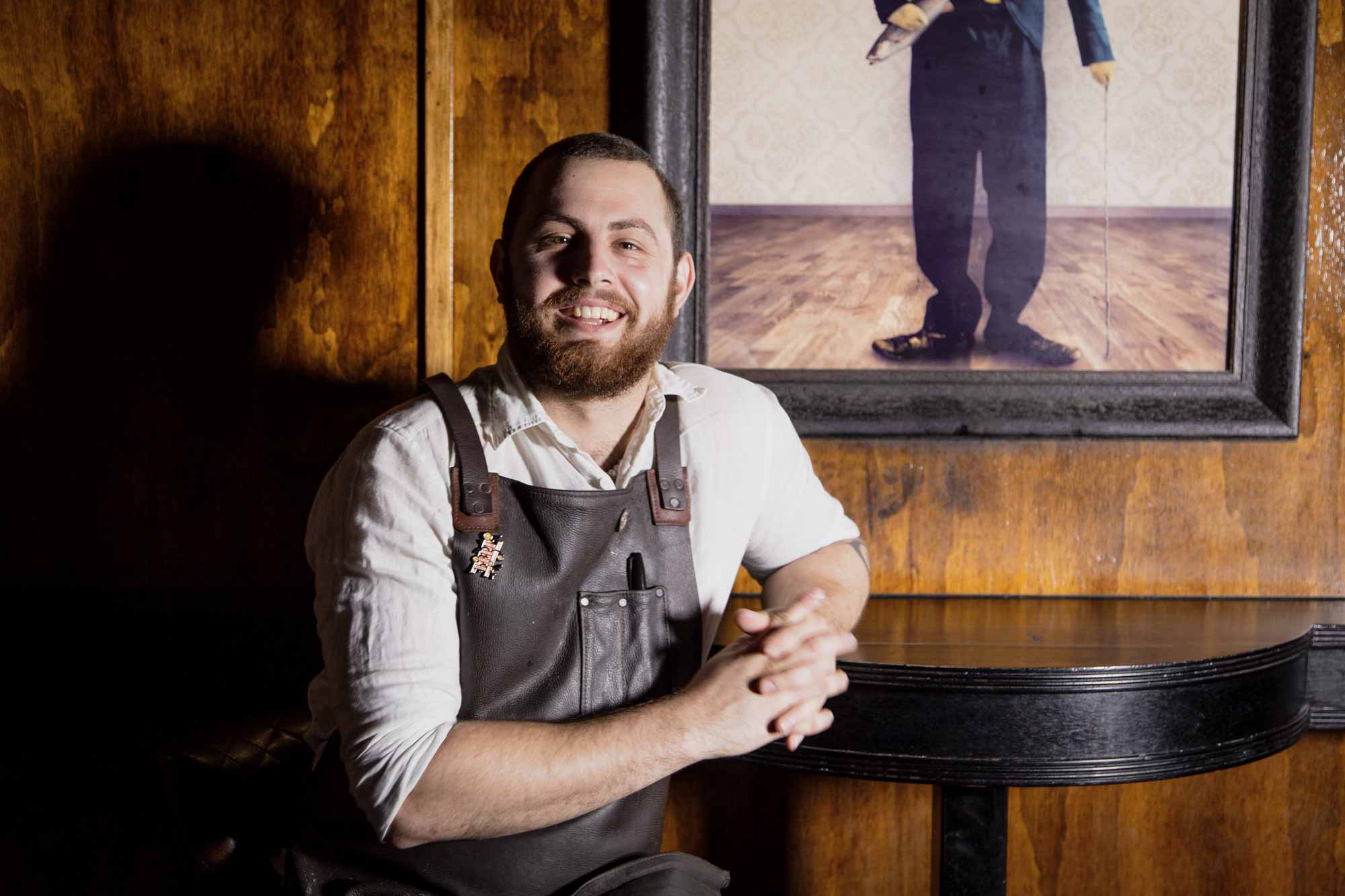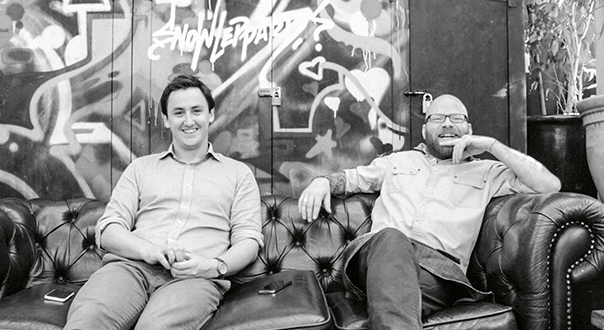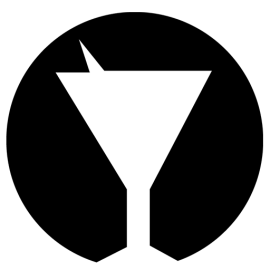I learned about wine and spirits by stealing menus.
I don't mean that in a metaphorical sense, as though I copied other bars' menus (although I did my fair share of that, too). I mean that, packed away in a box somewhere, there are dozens of menus that I stole from bars and restaurants in the early 2000s — big menus, hardcovers, perfect-bound menus of many pages, all of which were not cheap to produce.
One of my favourites was the drinks menu at Wildfire, a restaurant with a not insignificant bar area, down at the Overseas Passenger Terminal at Circular Quay. It was an award-winning menu, put together by an award-winning somm, Ben Moechtar, and I read that thing like a textbook. I made notes in the margins, and worked out the markups on bottles where I could find cost pricing (they had access to wines that I never knew about, and if I did I wouldn't be able to buy them). That menu taught me how menus worked.
I'm older now. I still love a well made menu, but my thieving days are behind me (the best menus really do cost a lot to produce, so please don't start stealing them). These days most menus are in PDF form on the bar's website, and if they're not, you have a camera in your pocket on that thing that people once used to make phone calls.
Ask nicely, and many bartenders will email you a copy of the list, because they have the menu on file and readily accessible — something that, in the wake of the pandemic, has become necessary.
We're living in the age of the QR code menu.

We check into bars with a QR code. QR codes with links to the drinks menu are plastered all over the venue, on tables, coasters, and on slips of card that once were called menus.
You do remember those, right? Lists of things you could buy in bars and restaurants?
When covid did come along, no-one was really sure just how the virus spread, and just about everything became cardless and touchless over night. Enter the QR code. Scan it with your phone, and up pops the bar's menu — no touching required.
It's not ideal, of course — a drinks menu of many pages doesn't translate well to the small screen of your smartphone, and scrolling endlessly to find the drink you want to drink takes you out of the conversation you ought to be having with your mates (in between posting photos of drinks to Instagram, of course).
It was not ideal but it was necessary. And while the services that create QR codes present their own challenges — we've heard of one Brisbane bar which used a freely available QR code generator, only to find out that when patrons swiped between pages on the menu, they were served ads for Playboy — there have been some great menus adapting to this era.
One of the more interesting examples I've come across has been the menu from Manhattan at The Regent in Singapore. It's a beautiful hotel bar, the kind that makes you feel like you're made of more money than you are. For their digital menu they recreated their popup book cocktail list, with clickable elements which provide further detail. Give it a spin below.

Other bars have found new ways of organising all that menu information in a phone screen format.
Sydney's Burrow Bar introduced an accordion style menu, which sees the listings expand for more information if the punter needs it.

And at Savile Row in Brisbane, they've used a linktree — the same kind of page you'll find on Instagram profiles that beg you to find the #linkinbio — to section out the pages of their extensive cocktail list.

Still, I can't wait for the QR menu to go.
The QR code is one more reason to stick our faces into our phones — as if we didn't do that enough — and does away with a crucial element of the tactile experience at a bar. As good as the QR menus above are, I don't know they can ever replace the real, physical object.
But there may be a place for QR codes in the future, with bar managers like Savile Row's Jacob Cohen seeing the benefits.
"We will definitely bring back the physical menus at some point as the storybook format we used to use was very beautiful and a staple of our venue," he says. "However I think we will also continue to use QR codes as well, as they are very efficient and can be edited easily."
So what makes a great menu?
Whether it's a QR code menu or the real thing, the best menus share a few things in common.
- Story. The best menus tell a story. Not in the sense that there’s a lot of words — you want, I think, to be able to scan a menu and get back into the conversation you’re hopefully having — but in the sense of having a reason for being. The best of these have a thread that flows through the drinks and the cocktails and ties into why the bar exists.
- Great design. The layout should serve the story of the menu — the fonts, the design and format should tie in with the story and tie in with bar; the best examples always feel like they’re a necessary piece of a greater whole. These don’t have to be leather-bound tomes, either. The daily five drink menu at Bulletin Place was handwritten on a roll of butcher’s paper that hung above the bar, and made perfect sense — I can’t remember how many times they were nominated for Cocktail List of the Year at the Bar Awards, but it was a lot.
- Good things to drink, made by great people. You can have all the fancy packaging in the world, but if what’s inside sucks it’s all for naught. And... I almost wholly believe that. It’s what I think should be the case. But the fact is that we’re all suckers for a glossy package, sometimes. Sometimes, the sheen of the way something is presented hides the fact that in the glass — or ceramic bowls, or man’s hat, or whatever vessel the drink is being served in — there is a very ordinary drink.
- Something special. Not all menus need to be out-there, deconstructionist reimaginings of the concept formerly known as a menu. But a little creative spark is a good thing. We can all enjoy seeing something that has had love and attention put into it. The best menus are something to talk about, they provide something to point at and natter about when the conversation between people falters — like the drinks, a great menu will be spoken about the day after.
Further reading
To craft a great cocktail list is to master the balancing act between the creative and the practial. The piece below is one I put together back in 2015, having spoken to Jason Williams (who today lives in Singapore, working as the creative director for Proof & Company, a role that sees him consulting on menus and venue concepts across Asia — he's also co-owner of Hinchcliff House), accomplished bar manager and friend of Boothby, Cristiano Beretta, and globally-recognised bartender Tim Philips-Johansson (who has just been named the new global brand ambassador for Johnnie Walker).
Although the prices in the piece are dated — I don't remember the last time I saw a cocktail for $16 — the advice rings true.

The history of the menu, and the benefits and issues with its current, QR code format are covered in detail below, beginning in the 1770s — you'll want to set some time aside to read it.

That's it for the Boothby newsletter this week. We've been a few weeks between emails, because we've made some technical changes to make things faster. I hope you enjoyed this read, and if you did please pass it onto someone else.















